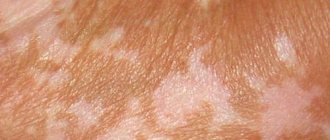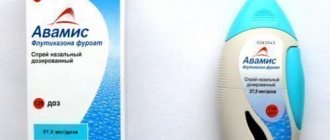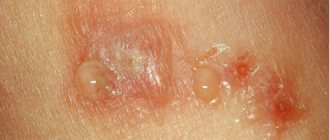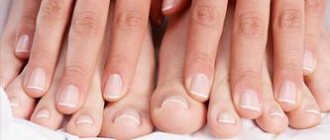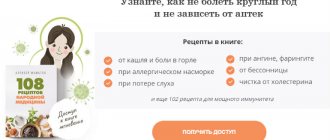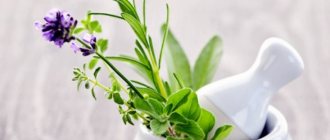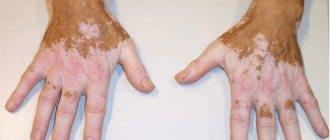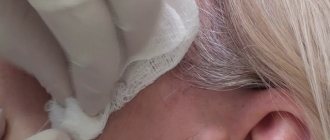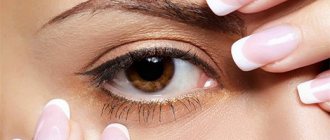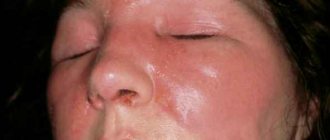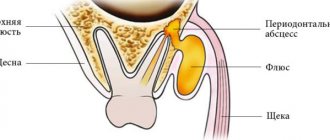(average: 3.67 out of 5)
Lichen planus is a chronic disease that affects the skin, and sometimes the mucous membranes and even the nail plates. None of the probable causes of this disease have been scientifically confirmed. Scientists suggest that lichen ruber may have a viral, allergic, immune or genetic nature.
- Recipes for external use
- Calendula
- Birch tar cream
- Hydrogen peroxide
The main symptoms of the disease are specific skin rashes in the form of small violet-blue or burgundy nodules on the abdomen, chest, and limbs. The rash has a flat, smooth surface, can take different shapes, and causes severe itching. Lichen ruber often affects the mucous membrane of the mouth, localizing in the form of white painful plaques on the palate, in the sublingual space, on the inner surface of the cheeks.
This disease is not contagious and, with adequate treatment, has no tendency to recur. For treatment, and in particular: reducing pain, relieving inflammation and itching in lichen planus, recipes from the arsenal of traditional medicine are excellent, which can easily be used at home.
Top
Diet for various types of illness
Diet foods vary depending on the specific type of lichen.
- But rose hips and wheat, prunes and nuts, squid and oatmeal will help.
- To speed up metabolic processes and remove toxins, drink clean water.
Use antioxidant products to neutralize the effects of negative environmental factors.
First, let’s learn about the diet for pityriasis rosea in humans.
Diet for pityriasis rosea
- Pityriasis rosea involves a hypoallergenic diet for 2-3 weeks and an increased amount of dairy and plant products.
- For children, the diet is recommended for 7 to 10 days.
The diet of mother and child for pityriasis rosea is discussed in this video:
Can't eat
Remove allergens:
- citrus;
- chocolate and other sweets;
- red fruits;
- nuts;
- bakery products;
- eggs;
- aromatic additives;
- spices;
- fresh milk;
- alcohol;
- tea and coffee.
Avoid the consumption of sweet carbonated drinks with dyes, confectionery products with cream, canned food and smoked products. Drink compotes or herbal tea.
You can eat
What can you eat while on a diet for pityriasis rosea? Useful foods for pityriasis rosea:
- lean meat and fish;
- cereal porridges (rice, oats, semolina);
- vegetables;
- greenery;
- honey.
Limit for a while: potatoes and buckwheat, currants, watermelons, peaches and bananas, broths, legumes, offal, salty types of cheese.
Next, a diet for lichen planus on the body is subject to consideration.
Lichen planus
Nutrition for lichen planus (including warty, atrophic) has one problem - the lack of specific foods that cause rashes
It is impossible to make recommendations for improving the condition of products here, but there are general rules that are worth paying attention to
Remove from your diet foods with dyes and preservatives, flavors and harmful additives.
If the lichen has spread to the oral cavity, then some foods will cause discomfort and pain, irritating the damaged mucous membrane. In this case, you should avoid:
- acute;
- salty;
- sweet;
- hot.
After any meal, you must rinse your mouth thoroughly and remove any remaining food from your mouth.
This video looks at treatment and diet for shingles in adults and children:
Shingles
If shingles is detected, it is recommended:
- nuts (pistachios and hazelnuts, raisins, almonds and cashews, peanuts and walnuts);
- dried fruits (dried apricots, prunes)
- berries (viburnum, raspberries, blueberries, strawberries, cranberries, sea buckthorn, blueberries, grapes, rose hips);
- fish and seafood (eel, salmon, squid, pike perch);
- greens (sorrel, spinach);
- fruits (apples, apricots, plums, cherries,
- wheat germ, oatmeal, seeds, barley groats, vegetable oil);
- vegetables (onions, red bell peppers, Brussels sprouts, broccoli, beets, eggplant, corn, carrots).
It is better to drink green tea and clean water.
What does a diet suggest for pityriasis versicolor? Let's find out further.
Pityriasis versicolor
What diet is needed for pityriasis versicolor caused by fungal microorganisms?
You will need to limit or completely eliminate foods that promote rapid growth of the fungus. Among them:
- sweets (they can be replaced with a small amount of honey);
- bakery products;
- alcohol.
The diet should include:
- fats of animal origin, 1/3 vegetable and fish oil;
- bran or whole grain bread;
- fresh vegetables, fruits and berries;
- compotes and clean water, or mineral water without gas.
The functioning of your gastrointestinal tract is immediately reflected in the condition of your skin. Therefore, spare her, exclude harmful foods and prolong remission.
This video discusses treatment and diet for ringworm:
General rules
The term "lichen" brings together dermatoses that are caused by fungi, viruses or other microorganisms.
Many dermatoses are recurrent in nature, appearing periodically. Their pathogenesis is based on gastrointestinal pathology, metabolic disorders, decreased body reactivity and susceptibility to infectious diseases. Reduced defenses and stress create favorable conditions for infection by fungi and viruses. In some diseases, the allergic factor also plays a certain role. In this regard, in case of these diseases, adjustments to the diet are necessarily made and its main points can be highlighted:
- Maintaining a balanced diet. Food must contain the required amount of proteins, carbohydrates, fats, microelements and vitamins , which has a beneficial effect on the immune system . Among protein foods, preference is given to lean meat, fish (if not contraindicated) and dairy products. It is desirable to have a predominance of vegetable fats over animal fats in the diet, since they contain vitamins A and E , which increase the body's resistance and weaken allergic manifestations. Carbohydrates should be replenished primarily through the consumption of complex carbohydrates (cereals, vegetables, fruits, bran, whole grain bread).
- The diet should be gentle on the liver, which includes the exclusion of smoked, salty, spicy and fried foods, spices and seasonings, as well as canned food and extractive substances (meat, fish and mushroom broths). If pathology of the liver and biliary tract is detected, additional treatment must be carried out.
- Be sure to introduce fermented milk products with bifidobacteria , which restore normal flora, and this has a beneficial effect on the immune system.
- Food must be natural, freshly prepared and free of preservatives, flavorings and flavor enhancers.
- If the patient has constipation , restoration of normal intestinal function, as well as elimination of flatulence .
- For all diseases, drinking alcohol (including beer) is prohibited, primarily because it adversely affects liver function and aggravates the course of skin diseases.
Nutrition for different types of skin lesions has some features, which are discussed below.
Diet for pityriasis rosea
Zhiber's pityriasis rosea is classified as a dermatoses of infectious-allergic or viral origin, but the exact cause is not clear. At first it appears as one pink maternal spot, the core of which turns yellow and peels off over time. After a few days, small itchy spots appear all over the body. Among the causes that provoke the disease are hypothermia, nervous stress, decreased immunity, previous infectious diseases, intestinal disorders and metabolic disorders.
For Zhiber rosea, a hypoallergenic diet is prescribed, which excludes:
- fish, seafood, fish caviar;
- milk and cheeses;
- brightly colored fruits (red apples, strawberries, raspberries, blueberries, melons, strawberries, cherries, grapes, persimmons, pomegranates, plums) as well as citrus fruits, pineapples and melons;
- red vegetables (tomatoes, carrots, beets, red peppers, eggplants, red cabbage);
- eggs;
- products containing flavors, dyes, preservatives;
- honey;
- nuts;
- chocolate, coffee and cocoa;
- alcoholic drinks;
- smoked meats, pickled and canned products;
- spices, seasonings, sauces;
- fruit waters and juices with preservatives.
- buckwheat, corn and wheat cereals;
- pork, lamb, turkey, rabbit;
- potatoes and legumes;
- herbal decoctions.
- natural fermented milk products without additives or dyes;
- iron-fortified baby food;
- lean meat, chicken;
- pearl barley, rice, oatmeal and semolina;
- tongue, liver, kidneys;
- rice and oatmeal bread;
- greens and green vegetables: white cabbage, broccoli, cucumbers, cauliflower and Brussels sprouts, green salad, dill, parsley, zucchini, rutabaga, squash, turnips;
- light-colored fruits: white currants, apples, gooseberries, pears, dried apples, white cherries;
- butter, sunflower, olive;
- weak tea, compotes, rosehip decoction;
- still mineral water.
The diet is predominantly dairy-vegetable and must be followed for up to 3 weeks for adults, and for children for up to 10 days.
Diet for shingles
Shingles is caused by the Herpes zoster virus, which in this disease affects the nerve endings. It is characterized by malaise, headache , skin inflammation, rashes and pain in the area of the affected nerve - usually in the chest area. Inflammation and pain subside over time, the bubbles with contents decrease and peel off, but pain along the affected nerve can persist for several months. The disease develops against the background of overwork, stress, decreased immunity, cancer and bone marrow transplantation.
With herpes zoster, especially recurrent ones, attention should be paid to nutrition. Since the persistent course of the disease is facilitated by decreased immunity and hypovitaminosis , the diet should be complete and balanced.
- Contain a sufficient amount of complete proteins (cottage cheese, dairy products, meat, fish). Preference should be given to lean meat and fish, which are best boiled or baked. The most valuable fish as an additional source of omega 3 acids are mackerel, herring, tuna, salmon, halibut.
- It is necessary to enrich the diet with vitamin B (sprouted cereals, brown rice, whole grain products, brewer's yeast, soybeans, pistachios, peanuts, broccoli, green leafy vegetables, nuts, seeds, buckwheat, millet, lentils, oatmeal and barley, corn, liver, beef, fish, eggs, pumpkin seeds, brown rice, beans).
- B vitamins increase the body's resistance and improve metabolic processes.
- Introduce vitamin A (cod and halibut oil, fish oil, cod liver, animal liver).
- It is necessary to eat foods containing vitamin C , which is an antioxidant (citrus fruits, strawberries, melon, leafy green salads, Brussels sprouts, broccoli, black currants, bell peppers, strawberries, rose hips, apples, tomatoes, apricots, peaches, persimmons).
- The diet should contain the antioxidant vitamin E , which a person can get by consuming vegetable oils, all types of nuts, oatmeal and buckwheat.
- It is necessary to daily consume fermented milk products with bifidobacteria , which help normalize the intestinal microflora and indirectly increase immunity and resistance to infections.
- All cereals are allowed, but buckwheat and oatmeal are preferred, as well as all vegetables and fruits as sources of vitamins and microelements.
In order to reduce the load on the liver, it is worth excluding fried and spicy foods, strong broths, pickled vegetables, smoked foods, coffee and limiting animal fats. Avoid alcohol completely. The diet must be followed for several months.
Diet for lichen planus
Lichen planus is a chronic disease that affects the skin, mucous membranes and sometimes nails. Polygonal plaques of pink color with a lilac tint have a characteristic localization: wrist joints, anterior surface of the leg, sacrum, oral and genital mucosa. The causes of the disease include: hereditary predisposition, infection, exposure to chemicals and drugs, stress.
There are cases of complete recovery of the patient without treatment and in the absence of symptoms, treatment is not carried out. There are cases when relapses occur over several years, the number of rashes increases, and they are accompanied by severe itching. A distinctive feature of this dermatosis is its frequent combination with gastrointestinal diseases ( gastritis , peptic ulcer , cirrhosis of the liver ) and diabetes mellitus . Therefore, with lichen planus, dietary nutrition is of great importance, which is so necessary for all diseases of the gastrointestinal tract.
Long-term inflammation impairs the immune system, which contributes to the progression of the disease and the spread of the process. It turns out to be a vicious circle, which can be interrupted by restoring the immune system, and proper nutrition plays an important role in this. There is no special diet that can cure this disease, but taking into account all of the above, dietary nutrition should include the following:
- If there is itching and severe inflammation during an exacerbation, avoid spicy, smoked, salty, fried foods, canned and extracted foods.
- It is prohibited to consume chocolate, honey, milk, eggs, chicken and poultry meat, citrus fruits, coffee, cocoa, sweets, exotic fruits and seafood, products with preservatives and dyes, as they are strong allergens.
- Inclusion in the diet of vegetables and fruits of dull color, fiber and bran. Dietary fiber has the ability to absorb under-oxidized metabolic products in the intestine and remove them, enhancing intestinal motility.
- Regulating stool and combating flatulence , which is achieved by eating bran, prunes, apples and limiting the diet of legumes.
- Refusal of alcohol and colored drinks, juices with preservatives are also prohibited.
- Vitamins E , A , group B and nicotinic acid are used in the treatment of this disease and must be supplied with food. Vitamin A affects the division of skin cells and reduces the severity of inflammation. It can be obtained by eating fish oil, halibut, cod liver, beef and pork liver.
- Nicotinic acid is found in baked potatoes, liver, beef, turkey, asparagus, kale, broccoli, celery, bulgur, oatmeal, sprouted barley, and wild rice.
- Sources of vitamin E include wheat germ oil, cottonseed oil, corn oil, flaxseed oil, soybean oil and sunflower oil.
- B vitamins can be replenished by eating green peas, potatoes, meat, fish, legumes, cabbage, whole grains, whole grain bread, sprouted wheat, buckwheat, carrot and turnip tops, brewer's yeast, and green salads.
With pityriasis versicolor or “multi-colored,” the causative agent of which is the fungus Pityrosporum ovale, scaly spots of different colors appear (white, red-brown, dark brown). The pathogen is transmitted from the patient through things and through direct contact with the patient.
The appearance of this type of dermatosis is promoted by hormonal imbalance ( diabetes mellitus , Cushing's syndrome , pregnancy ), cancer and tuberculosis . Nutrition should pursue the following goals: increasing immunity and body resistance, normalizing metabolism (especially in the presence of diabetes).
- The diet should contain a sufficient amount of calories (their number decreases with diabetes and increased weight).
- Excluding simple carbohydrates from the diet (if you have diabetes) or significantly limiting them.
- Sources of protein should be chicken, legumes, turkey, eggs, dairy products, cottage cheese. Of all animal proteins, milk protein is easily digestible, so you need to give preference to it and it is better to consume low-fat dairy products (not higher than 0.5-1%).
- Including sufficient amounts of vegetables and fruits, algae and fiber (bran, nuts, whole grains, peanuts, beans, lentils, raisins, prunes). Seaweed is a source of minerals, trace elements and fiber.
- Consumption of vegetable oils as a source of omega 3 polyunsaturated fatty acids (soybean, flaxseed, walnut, wheat germ, olive).
- It is necessary to consume foods containing vitamin C, which increases the body's resistance to infections (black currants, bell peppers, citrus fruits, leafy green salads, strawberries, melon, Brussels sprouts, broccoli, strawberries, rose hips, apples, tomatoes, apricots, peaches, persimmons).
- B vitamins, which increase resistance to infections and are necessary for normalizing metabolism. You need to eat all types of nuts, brewer's yeast, buckwheat and millet cereals, lentils, corn, liver, beef, fish, eggs, sunflower and pumpkin seeds, brown rice, beans.
- It is necessary to have vitamin E in the diet (vegetable oils, almonds, hazelnuts, peanuts, oatmeal and barley, rose hips, prunes) and vitamin D (fish oil, fish and eggs).
- It is important to drink up to 1.5 liters of liquid (mineral water, juices, compotes and herbal teas).
Source of the article: https://medside.ru/dieta-pri-lishae
What not to eat if you have pityriasis rosea
By its nature, pityriasis, popularly called pityriasis rosea, is a stable virus that penetrates into the body when the immune system is weakened after illness, during the period of vitamin deficiency - in autumn, winter, spring. To date, experts have not fully studied the disease pityriasis, which is also called Gilbert's lichen. Pityriasis rosea can be contracted through household contact with a sick person.
Pityriasis rosea: what is dangerous, symptoms
If you see that an infected person is or is working next to you, you must create all the conditions to avoid becoming infected - have your own hygiene items, utensils, clothes, etc.
Fortunately, not everyone is susceptible to infection, only those who have a weakened body. Most often, pityriasis and Gilbert's pityriasis rosea occurs in people aged 20 to 40 years.
This suggests that socially active people are susceptible to the virus.
- Weakness.
- Fever.
- Growth of lymph nodes.
Following these signs, the first maternal lesion appears on the human body - a pink spot that can reach 4 cm in diameter, covered with scales. Then, pink-colored lesions protrude above the skin form.
More often, formations appear on the back, shoulders, hips, chest, and sides of the body. The period of distribution throughout the body is 14−21 days. The spots may disappear, leaving a white coating in their place.
They can also have blisters, a rash, and merge into one big one. Pityriasis on the face rarely occurs; when infected, itching may occur. Pityriasis rosea can often disappear without a trace even without treatment.
But you should not hope for such an outcome and it is better to consult a doctor.
Pityriasis rosea - consequences
It is not pityriasis itself that is dangerous, but the consequences of pityriasis rosea - streptoderma, eczema, etc. Allergies can also provoke it, so pityriasis rosea and diet are things directly related to each other.
- When allergic reactions occur, a person’s immunity drops, which allows pityriasis to spread and cause side skin diseases. Patients are not recommended to consume citrus fruits, fish, eggs, honey, nuts, chocolate, milk, alcohol, coffee.
- Gilbert's lichen is treated with external use of specially formulated ointments prescribed by a dermatologist.
- You should not stay in the open sun for a long time, expose your body to overheating or hypothermia, you should avoid clothing made from synthetic fabrics and natural wool, and also avoid spicy foods, smoked meats, and pickled vegetables.
- Doctors do not recommend soaking the affected areas with hot water; they advise not to take baths and give preference to showers, and to use washing products that have the effect of moisturizing the skin.
Treatment of pityriasis rosea
Gilbert's lichen can be easily treated with both folk remedies and dosage forms. If you decide to use old, proven recipes, do not forget to first visit a doctor and get qualified advice.
- Sea buckthorn, rose hip, milk thistle, and sunflower oils are highly effective in the treatment of pityriasis; they are used to lubricate the affected areas.
- Juice, tincture of medicinal celandine, and ointment from calendula flowers are also used.
- Under no circumstances should substances such as sulfur, tar, or alcohol be used, otherwise the skin will experience additional irritation and cause complications.
- A number of drugs have been created – chlorophyllipt, “Romazulan”, which reduce itching and burning in the formations.
- Complex treatment includes taking antihistamines that relieve swelling, itching, irritation, and corticosteroid ointments containing hormones.
- In advanced stages and the addition of eczema, streptoderma and other skin diseases to pityriasis, antibiotic therapy is necessary.
We should not forget about strengthening the immune system, so the list of medicines also includes a complex of vitamins and immunomodulators.
Prevention of pityriasis rosea
As is already known, with a strong immune system it is impossible to become infected with pityriasis. Hardening the body, an active lifestyle, playing sports, proper nutrition, giving up bad habits, positive emotions will strengthen the protective functions, and pityriasis rosea will not have a chance to settle on your skin.
Diet for lichen
Description current as of 05/25/2017
General rules The term “lichen” combines dermatoses that are caused by fungi, viruses or other microorganisms. Many dermatoses are recurrent in nature, appearing periodically. Their pathogenesis is based on gastrointestinal pathology, metabolic disorders, decreased body reactivity and susceptibility to infectious diseases. Reduced defenses and stress create favorable conditions for infection by fungi and viruses. In some diseases, the allergic factor also plays a certain role.
Causes of pathology, symptoms and consequences
This is an infection caused by fungi or viruses. The pink variety of herpes flares up in the background:
- ARVI, sore throats, colds;
- hypovitaminosis;
- allergies;
- stress;
- epidermal injuries.
Main symptoms:
- redness with the appearance of bright pink plaques up to 4 cm in diameter;
- a gradual increase in pink elements in size with the acquisition of a yellowish tint;
- itching, peeling;
- formation of small scales.
The prognosis is favorable if therapy is started on time. In case of complications, a secondary purulent infection occurs, and eczema, impetigo, pyoderma, and folliculitis may develop.
Children and people with weakened immune systems are more likely to be exposed to fungal spores. Thus, an atypical form of pathology is characterized by an unusual shape and course. It can be caused not only by viruses or fungi, but also by drug abuse.
The disease is difficult to diagnose, because outbreaks of infection are often localized in the armpits and bends of the limbs.
The most dangerous type is considered to be shingles caused by the herpes virus. Signs:
- redness;
- pigmentation;
- temperature increase;
- peeling, formation of scales like medallions.
If left untreated, complications are inevitable: meningitis, conjunctivitis, neuralgia.
Depending on the type, the plaques affect individual areas or completely cover the entire body. If unpleasant symptoms appear on the body, you should contact a dermatologist and take skin tests.
Therapy is complex. Proven traditional medicine recipes with antifungal and immunomodulatory properties are quite effective at an early stage.
Diet for various types of lichen
With pityriasis
This type of lichen is caused by fungi. Therefore, with pityriasis versicolor, favorable conditions for their reproduction should be excluded. We must give up sweets, baked goods and alcohol. Products containing fats - vegetable and animal, as well as fish oil will be useful. You can eat fresh berries (raspberries, strawberries, blueberries), fruits and vegetables. Eat bread from wholemeal flour. It is better to drink non-carbonated mineral water or compote (not very sour with a small amount of sugar).
For pink lichen of Zhiber
Fish and seasonal vegetables should be included in the diet for shingles.
Most often, pityriasis rosea occurs due to allergies or viruses. Therefore, you should adhere to a hypoallergenic diet. It includes porridge from rice, oats, semolina, lean meat and fish, seasonal vegetables, honey, dill and parsley. If you are diagnosed with pityriasis rosea, you should not eat large quantities of buckwheat porridge, peas and beans, bananas and peaches. If you have pityriasis rosea, it is strictly forbidden to eat spicy seasonings, canned vegetables and fruits, eggs, oranges and lemons, confectionery and sweet pastries, and alcoholic beverages.
For lichen ruber
The disease is chronic and cannot be fully cured; its causes are unknown. Lichen is localized mainly on the mucous membranes and skin. Therefore, it is advisable to eat only healthy foods rich in vitamins and minerals; vegetables, fruits and berries should be seasonal, without being treated with chemicals. Smoked products should be excluded from the diet, as well as dishes with food additives in the form of dyes or flavors. If lichen affects the mucous membranes of the mouth, you should not eat salty, sour or hot foods, since the sensitivity of the mucous membranes is very high.
For lichen versicolor
Alcohol, even weak alcohol, should not be consumed during the hour of treatment.
This is a type of pityriasis versicolor and is caused by fungi of the genus Malassezia. Sweet and starchy foods provoke the growth and development of fungi, so such products should be excluded from the diet. It is not recommended to drink alcohol even with minimal alcohol content. You should include in your diet rice, oatmeal or corn porridge, parsley, dill, kefir, fermented baked milk, fresh seasonal vegetables and fruits, preferably local ones, which are not treated with chemicals for transportation.
Diet and regimen for herpes zoster
Shingles is caused by the herpes virus. In addition to skin rashes in the form of red spots, the disease is accompanied by high temperature (up to 39 degrees), fever, pain in muscles and joints. Depending on the location of the virus, the membranes of the brain, facial, trigeminal or costal nerves may be affected, and lymph nodes may enlarge. Therefore, a patient with herpes zoster should have gentle bed rest. The room where such a person is located must be frequently ventilated and wet cleaned. The patient's clothing should be loose-fitting and not tight to the body. During the acute period of the disease, it is advisable to avoid walking in the sun, since ultraviolet radiation provokes the growth of lichen spots. If complications arise, hospitalization is necessary.
The diet includes various types of nuts (peanuts, walnuts, almonds), raisins, dried apricots, lean fish and meat, fresh berries (raspberries, strawberries, grapes), fruits and vegetables, dill, sorrel, oatmeal or barley porridge. Along with proper nutrition and a healthy lifestyle, it is recommended to give up bad habits and a sedentary lifestyle.
Diet for adults
Adult patients must avoid tea and coffee, smoking and drinking alcoholic beverages, spices and aromatic additives, smoked meats, spicy and salty foods during treatment for this disease.
Each individual type of lichen requires a special approach to diet planning. Dietary food for pityriasis versicolor differs in that the food composition includes:
- animal fats;
- fish fat;
- small proportion of vegetable fats;
- bread only bran or grain;
- green tea and fresh fruit compote;
- mineral water without gases.
When compiling this diet, you need to make sure that all foods that contribute to the rapid growth and reproduction of the fungus are completely excluded from it:
- any sweets, including homemade sweets and jam. It is allowed to replace sugar by including in the menu dishes and drinks containing a small amount of honey;
- homemade baked goods and baked goods;
- pastries and cakes;
- sweet carbonated drinks;
- strong alcoholic drinks and beer.
Diseases such as pityriasis versicolor occur against the background of hyperglycemia, disorders of the thyroid gland or cancer. Its appearance can be provoked by pregnancy, which is associated with hormonal changes, or tuberculosis. All of these diseases are closely related to hormonal imbalance in the patient’s body, and this must be taken into account when planning a diet.
Speaking about herpes zoster and diet during treatment, it is worth noting that the causative agent of this disease is the herpes virus Varucella Zoster. In children, the disease manifests itself in the form of chickenpox, which they tolerate quite easily, but if an adult becomes ill, the disease is severe, often with complications.
Ringworm - treatment
Therapy for this group of pathologies depends on their causative agent. The optimal way to treat lichen is developed by a dermatologist after a thorough differential diagnosis. Some types of skin lesions do not require special therapy, for example, Gibert's disease. Pityriasis rosea goes away on its own within a few months; treatment only involves relief of unpleasant symptoms. Other forms of pathologies are eliminated with the help of local and systemic drugs aimed at combating the cause of the disease.
Ointment for ringworm
The selection of medications should be carried out by a qualified specialist. An effective ointment for lichen on human skin is prescribed taking into account the causative agent of the disease. If the pathology is caused by fungi, antimycotic agents are used:
- Sulfuric ointment;
- Mikoket;
- Fungibak;
- tar ointment;
- Mycoseptin;
- salicylic ointment;
- Clotrimazole;
- sulfur-tar ointment;
- Mycozoral;
- Flucinar
- sulfur-salicylic ointment;
- Yam;
- Mycozolon;
- Wilkinson's ointment and analogues.
If viral pathogens are detected, other types of local drugs are required:
- Virolex;
- Herperax;
- Acyclovir;
- Zovirax;
- Gerpevir and synonyms.
Ringworm cream
Ointments have a greasy consistency and dense structure, which is not suitable for all skin types. In such cases, less “heavy” creams and pastes are used. If lichen fungus progresses in a person, treatment involves the use of the following drugs:
- Thermikon;
- Sinalar;
- Lamisil;
- Mikonorm;
- Terbinox;
- Sulsena;
- Exoderil;
- Mycosporus;
- Dermazol;
- Terbinafine;
- Nizoral;
- Exifin;
- Terbix;
- Bifosin;
- Miconazole and analogs.
For the treatment of viral forms of lichen, the following creams are recommended:
- Viru-Merz-Serol;
- Agerp;
- Vivorax;
- Acivir;
- Panavir;
- Acigerpin;
- Vratisolin;
- Atsik;
- Herpestil;
- Vartek and analogues.
Tablets for lichen
Systemic medications are prescribed only in severe cases when local therapy alone does not help. Tablets are more often used if lichen is diagnosed in an adult; for children, this approach is considered too dangerous due to the toxicity of the drugs used. The described means are selected in accordance with the causative agent of the pathology. Preparations for lichen of fungal origin:
- Nystatin;
- Lamisil;
- Fluconazole;
- Pimafucin;
- Irunin;
- Flucostat;
- Terbinafine;
- Itraconazole;
- Griseofulvin;
- Ketoconazole;
- Diflucan;
- Futsis;
- Exifin;
- Binafin;
- Mycomax;
- Loceryl;
- Rumicosis;
- Lamifene;
- Orungal;
- Tinidazole and analogs.
In the case of viral nature of deprivation in humans, the following names of tablets are required:
- Famvir;
- Valtsikon;
- Acyclovir;
- Valtrex;
- Gerpevir;
- Valvir;
- Isoprinosine;
- Zovirax;
- Valacyclovir and others.
Folk remedies for lichen
Alternative medicine drugs are effective mainly for fungal skin infections
Before treating lichen at home, it is important to take a scraping of the epidermis and find out why the rash appeared. Once the diagnosis has been established, it is advisable to agree on the chosen treatment methods with your dermatologist.
To some methods of traditional medicine, how to eliminate lichen in humans, an allergic reaction may occur.
Night antifungal ointment
Ingredients:
- soft butter – 1 tbsp. spoon;
- natural birch tar - 1 tbsp. spoon.
Preparation, use
- Mix the ingredients until smooth.
- Apply thickly to the affected areas.
- Apply a gauze bandage.
- Cover the compress with cellophane.
- Leave the ointment on all night.
- Repeat the procedure every evening.
A quick remedy for ringworm
Ingredients:
- lemon – 50 g;
- garlic – 70 g.
Preparation, use
- Remove the seeds from the citrus.
- Grind the garlic and lemon thoroughly to a paste.
- Mix the ingredients.
- Apply a compress of lemon-garlic mixture to the stained areas.
- After 2 hours, remove the product.
- Continue treatment for 3-4 days.
Antifungal lotion
Ingredients:
- vodka – 2 tbsp. spoons;
- iodine – 3 tbsp. spoons;
- tea tree essential oil – 3 drops.
Preparation, use
- Mix and shake all ingredients.
- Target areas with lichen 2-4 times a day.
- Continue therapy for 6-7 days.
Tar ointment
Ingredients:
- fresh heavy cream – 100 g;
- egg yolk – 2 pcs.;
- birch tar – 150 g.
Preparation, use
- Beat the yolks with cream.
- Add tar, stir the composition thoroughly.
- Rub the ointment into the affected areas 2 times a day.
- Repeat the procedure for a week.
Tar
Under all varieties of this substance, birch tar is used to treat lichen. Even classical medicine believes that this is a highly effective remedy for dermatological diseases, because birch tar is used both by folk healers and in official medical recipes. So a whole range of medical cosmetics are made from it: soap, Wilkinson and Vishnevsky ointments and others. The results of medical research indicate that the active substances of such tar can stop the synthesis of DNA in biological organisms that have abnormalities.
Due to their properties, drugs based on such an active substance have a strong antisymptomatic effect, contributing to the disappearance of rash, itching, peeling and other general and specific clinical manifestations of lichen.
Common folk recipes for anti-lichen medicines based on birch tar are:
- Tar and butter - the components of the future ointment are combined in a 1:1 ratio and mixed, after which they are applied to the skin for 5-8 hours. Daily systemic use of the ointment will help quickly cope with pityriasis rosea - the tar will stop the development of the disease, and the butter will strengthen the skin.
- Tar and ash - in this recipe, the ointment is created from birch tar and ash, which is obtained after burning a birch log. The ingredients are mixed in a ratio of 3 to 1 and applied to the skin for 2-3 hours. This recipe will help get rid of not only scaly lichen, but also psoriasis.
- Tar and fish oil - fat for the recipe is needed directly in liquid form, because the drug produced by most pharmaceutical companies in the form factor of jelly capsules is not suitable for creating an ointment. The ingredients are mixed in equal parts and applied to a gauze bandage prepared in advance (gauze folded several times is suitable). After production, the compress is applied and fixed for 2-4 hours. It is necessary to monitor the condition of the skin under the compress, because after it becomes wet to the touch and turns red, it is necessary to consolidate the effect with zinc ointment. By carrying out such procedures before bed, you can get rid of lichen of a viral and fungal nature.
- Tar and salicylic acid - the components are mixed in equal parts, the resulting product is an excellent universal medicine for combating pathogenic microorganisms. The only disadvantage of this medicine is the high allergenicity of its active components.
Tar has a fairly strong and specific odor, so it is better to carry out all procedures associated with it at night, in order to avoid an unpleasant reaction from others.
Medicines based on tar are very effective in dealing with all types of lichen; the main thing is not to forget how to use products based on it. Birch tar contains carcinogens, so before using it, you need to apply a drop of the substance to your wrist and elbow to check for allergic reactions.
Dietary nutrition for illness
Along with drug therapy, it is necessary to create a diet, which in this case corresponds to diet No. 5. The peculiarity of this diet is that the foods consumed are rich in vitamins, calcium and iron. Of course, the menu is compiled depending on the type of lichen. For example, the diet for Zhiber rosea requires increased consumption of dairy products. Hypoallergenic dishes and products must be included in the diet for three weeks. As for children, such a diet for them is prepared for 10 days.
Children's nutrition should be varied; the diet should include:
- oatmeal, rice and semolina porridge;
- lean dietary meat (rabbit, chicken breast, lean beef or veal);
- fresh vegetables;
- various greens;
- natural honey (excluding sweets and reducing sugar consumption).
When compiling this diet, you will need to consume:
- buckwheat;
- potatoes;
- bananas;
- apricots;
- peaches;
- watermelons;
- melons;
- salted cheeses.
And you need to completely exclude from the diet:
- citrus fruits and chocolate;
- nuts and baked goods;
- eggs and fresh milk;
- carbonated drinks with dyes;
- cream cakes;
- all fruits are red.
Dietary recipes
Nutrition for herpes zoster, fungal lichen, pink, red and pityriasis versicolor should be easily digestible. Soups are prepared in weak meat (boil beef or poultry and change the water after boiling) or vegetable broth with the addition of cereals. This dish, combined with whole grain porridge and salad, is an excellent lunch option.
As a dessert or fresh salads (in the absence of allergies) it is allowed to supplement with a small amount of honey. It is better to refrain from spicy dressings in the form of mustard, ground pepper, and vinegar. It is preferable to steam meat and fish or bake them in foil with vegetables.
Baked fish with vegetables
Ingredients:
- 500 g flounder fillet (or cod, carp, carp);
- 2-3 sprigs of parsley and dill;
- young carrots;
- medium-sized onion;
- a quarter teaspoon of a mixture of dry ground black pepper, thyme and oregano;
- vegetable oil for lubrication;
- salt to taste.
Cooking method:
- Line a medium-sized baking dish with foil.
- Divide the fish fillet into the required number of servings and place on foil squares.
- To each serving of fish, add finely chopped onions and carrots cut into thin long strips (can be chopped on a special grater).
- Sprinkle the fish with vegetable oil (olive or sunflower), salt and sprinkle with spices.
- Roll the foil squares with fish into envelopes or tubes and pinch the edges tightly.
- Bake the fish in a well-heated oven for 35-40 minutes at a temperature of 180-200 degrees. Check readiness and, if necessary, leave in the oven for another 5-7 minutes.
- Serve baked salmon with vegetables with natural yogurt, fresh parsley and dill and cucumber.
Diet soup with meatballs
Ingredients:
- 100 g minced beef;
- 50 g ground turkey;
- medium-sized onion;
- half a bunch of parsley;
- salt and ground black pepper to taste;
- a quarter of one piece each of carrots and white turnips;
- 3-4 green onions.
Cooking method:
- Mix the two types of minced meat thoroughly.
- Peel the onion and divide into two halves. Chop the first very finely and add to the minced meat, cut the second into thin rings.
- Cut the carrots and turnips into small cubes and cook over moderate heat.
- After boiling, add onion rings, salt and pepper the soup.
- Chop the parsley very finely and add half to the minced meat.
- Form small balls from the minced meat. Add to the soup and continue to simmer over low heat.
- Add the remaining parsley and finely chopped green onions to the finished soup.
- Serve with freshly prepared croutons.
Definition of disease
So what is lichen planus and why is proper nutrition so important during treatment? The peculiarity of this disease is that it affects not only the skin, but also the mucous membranes of the oral cavity and the patient’s nails. Unfortunately, the exact causes of this disease have not yet been established.
But all researchers agree that one of the main reasons why lichen planus appears on the human body is a dysfunction of the immune system. However, in the adult population, the development of this disease is often associated with experienced stress or increased emotional and mental stress. As a result, red spots appear on the surface of the skin or on the mucous membranes of the mouth. There are two forms of the disease, most often found in adults and children - typical (classical) and atypical
Unfortunately, the exact causes of this disease have not yet been established. But all researchers agree that one of the main reasons why lichen planus appears on the human body is a dysfunction of the immune system. However, in the adult population, the development of this disease is often associated with experienced stress or increased emotional and mental stress. As a result, red spots appear on the surface of the skin or on the mucous membranes of the mouth. There are two forms of the disease, most often found in adults and children - typical (classical) and atypical.
Lichen planus: treatment with folk remedies, background
With frequent relapses of herpes zoster, dietary nutrition should be followed constantly, otherwise the patient will not be able to get rid of the painful manifestations of the disease. Pityriasis rosea (lichen zhibert) is an infectious-allergic skin disease characterized by spotty rashes. Just like diet, the use of folk remedies depends on the type of lichen. For example, the following drugs are used to treat lichen ruber:
With this disease, exclude spices like horseradish, pepper, mustard, pickles, marinades, spicy foods, and alcohol from your diet. You should limit the consumption of products containing purines: meat of young animals, concentrated broths or meat extracts, fish, chicken, mushroom broths, jelly, meat sauces, smoked meats, offal kidneys, heart, brains, liver, fatty fish, salted and fried fish, canned fish, caviar, sharp and salty cheeses.
Do not drink large quantities of cocoa, strong tea, or coffee. Also, do not consume animal or cooking fats, cakes, cream cakes, chocolate, legumes, lentils, peas, soybeans, beans, foods that contain preservatives, juices, canned food and carbonated water. Seasonal products from our catalog:. The use of any materials without our prior written consent is prohibited.
Privacy Policy and User Agreement. The administration is not responsible for attempting to apply any advice or diet, and also does not guarantee that the information provided will help and will not harm you personally.
Always consult your appropriate physician! Our product catalog. Home Catalog of diseases Nutrition for lichen. General description of the disease Ringworm is a skin disease that is characterized by a rash of scaly patches, small itchy nodules or inflammatory patches of papules.
Causes of the disease Path of transmission of the disease: zooanthropophilic pathogens are transmitted from an infected domestic animal to humans; anthropophilic pathogens are transmitted from sick person to person; Geophilic pathogens most often, fungi enter human skin through contact with the ground.
Prerequisites for the occurrence of lichen If a person is already infected with pathogens, then lichen can appear during a period when the body’s immune level is reduced due to severe stress, hypothermia, allergic reactions to medications or a long-term illness.
Over the course of several days, small spots appear on the chest, back, hips and shoulders, which may itch slightly.
Often, this type of lichen occurs as a result of hormonal imbalance, which is provoked by diabetes, pregnancy, Cushing's syndrome, cancer problems, tuberculosis, and diseases of the endocrine system. The pathogen is transmitted through contact with a sick person or through everyday items.
They develop pink flaky spots covered with white-gray scales, as well as areas of thinning hair or broken off remains.
Ringworm is a skin disease that is characterized by a rash of scaly patches, small itchy nodules, or inflammatory patches of papules. The disease progresses unpredictably: it appears suddenly, then subsides, and can slowly develop over months or years. Path of transmission of the disease: zooanthropophilic pathogens are transmitted from an infected domestic animal to humans; anthropophilic pathogens are transmitted from sick person to person; Geophilic pathogens most often, fungi enter human skin through contact with the ground.
Often the disease is accompanied by itching or worsening general condition. In the chest area, the skin is covered with bubbles with transparent contents, which dry out and peel off over time, after which intoxication and pain subside, but signs of neuralgia persist for several months. This type of lichen can develop against the background of chronic stress, overwork, decreased immunity, bone marrow transplantation, cancer, or taking medications.
Precautionary measures
When treated, some plants are poisonous or contain carcinogenic additives. Before using compresses, tinctures, or decoctions, you should make sure that there is no allergy. You need to first conduct a test by applying a little of the prepared product to the bend of your elbow or wrist, leaving it on for 2 hours.
If burning, itching, or hyperemia occurs, do not use the prepared recipe.
What you need to know when using folk remedies:
1Iodine is an effective but aggressive component and a highly active allergen. In the first days, peeling and burning may occur. Before use, it is worth conducting an allergy test.
2 Unrefined birch tar with salicylic acid is good for getting rid of infection, but can also cause allergies.
3Tar soap based on birch tar works well. The darker the soap, the higher the concentration of tar with therapeutic properties.
4 Celandine is poisonous, so it should be used externally and carefully, adhering to the recipe and doctor’s recommendations.
This is a contagious disease. During the period of therapy, it is important to wash the patient’s bedding and underwear more often in hot water, then iron them thoroughly. It is worth avoiding contact with water and not taking baths or showers to prevent further spread of foci of infection.
The note! To achieve good results, you should exclude spicy and fatty foods from your diet and stick to a vegetable and fruit diet. Do not expose affected skin areas to high temperatures and sunlight. When carrying out hygiene procedures, you should not use rough washcloths or peels.
Treatment of pityriasis rosea
Therapy for this disease involves a hypoallergenic restrictive diet with the exclusion of salty, smoked, spicy and fried foods, as well as chocolate, citrus fruits and alcoholic drinks. It is also important to avoid tanning the skin, excessive sweating (sauna, bathhouse, phyto-barrel) and wear natural fabrics on the body, maintain hygiene, but do not rub the skin or use shower gel. Basically, these measures are enough for a complete recovery without the use of any medications.
Treatment with folk remedies
- Apple vinegar. Apply a clean cloth soaked in apple cider vinegar to the affected areas as often as possible per day.
- Celandine. Mix the leaves and flowers with vodka or 40% alcohol and leave for several weeks. Take 15 drops twice a day as a preventive measure and for treatment, diluting the tincture with water. Stains should be wiped with this tincture several times a day.
- Elder. 1 tbsp. Mix dried flowers with 200 ml of boiling water, leave for half an hour and take 4 tbsp. three times a day.
- Garlic and stevia. Mix several finely chopped cloves of garlic with stevia powder and stir the mixture in 200 ml of boiled water, leave for 10 hours in a place without light, strain and apply as compresses.
- Golden mustache. Lotions are made from tincture or leaves crushed into a homogeneous paste.
- Blackberry leaves. Mix freshly picked leaves and stevia powder until smooth and add a glass of boiling water. Apply as a compress to inflamed areas.
- Aloe. 1 tbsp. Take freshly squeezed juice before meals for 14 days.
- Iodine. Lubricate pityriasis rosea spots with iodine.
VIDEO
Treatment of deprivation using folk methods
Iodine against lichen
The simplest and most effective way to treat lichen is to alternately lubricate the affected areas with an iodine solution and a solution of brilliant green. Treatment will take about ten days.
An equally effective method: take a clean sheet of paper and roll it into a cone and burn it in a plate. It is important that the cone stands upright in the plate and burns without leaving a residue. Lubricate the affected areas with the resin remaining on the plate. You can add a little alcohol to the hardened and dried resin. The illness will go away within a week .
Diagnostic features
The signs of the disease are quite specific, so in addition to a standard visual examination, doctors prescribe the following procedures to make an accurate diagnosis:
- microscopic examination of a sample of affected skin;
- use of Wood's lamp;
- iodine test or, as doctors also call it, Balzer's test.
Diagnosis of lichen versicolor
Each of the above methods is unique and effective in terms of diagnosis, therefore, if pityriasis versicolor is suspected, they are often prescribed together.
Microscopy
During a microscopic examination, a skin scraping is taken from the affected area of the patient's body, which is then examined under a microscope. This procedure allows you to identify traces of yeast (under a microscope lens, the fungal threads have a rather curved shape, which is clearly visible only with this diagnostic method).
Microscopic examination of the skin
Wood's lamp
A common diagnostic test method prescribed for suspected different types of lichen. With its help, you can identify traces of fungal cells on the patient’s head, or more precisely, on its scalp. To do this, you need a Wood's lamp - a special device that emits ultraviolet rays.
Application of Wood Lamp
Essentially, it is an ultraviolet lamp used in diagnosing skin diseases. During diagnostics using a Wood lamp, the patient's hair is not affected by its radiation. Therefore, this method is considered one of the most popular.
Balzer test
During this procedure, the area of the patient's skin to be examined is treated with an iodine solution and then wiped with alcohol. Under the influence of the liquids used, the upper layer of the epidermis loosens, and the lichen spots become brighter and stand out against the background of healthy skin. The Balzer test is also performed as a confirmatory test to determine whether the disease has been cured.
Balzer iodine test
Raisins: antibiotic for skin
You can get rid of lichen with the help of ordinary dark seedless raisins, which contain substances that are completely harmless to humans and kill fungi.
A natural antibiotic needs to be rubbed onto the affected areas and the skin around them. A noticeable improvement is observed after the first use of dried berries.
How to treat lichen ruber in humans
The doctor chooses treatment methods based on the severity of the disease. In the initial stages, treatment for lichen ruber is local. Hydrocortisone, flucinar and ointments with dexamethasone and diprospan are prescribed. Dimexide is added to the products for better penetration through the skin. Applications with these drugs are applied to inflamed mucous membranes.
The erosive-ulcerative form of lichen often occurs in children. The child cannot eat normally because... the tongue and oral cavity are covered with small wounds. In such cases, it is recommended to apply a solution of kudesan and actovegin to areas inflamed by lichen. Open wounds on the body are sprinkled with honsurid powder. Ulcers are pre-treated with antiseptics so as not to create a favorable environment for the proliferation of pathogens of infectious diseases.
Antihistamines for lichen
Medicines can reduce itching in LLP and reduce the activity of allergens. In some patients, epithelization of lesions is observed after their use. The doctor prescribes an antihistamine for lichen planus when the cause of the disease is a reaction to contact with an allergen. If the occurrence of the disease is associated with abnormalities in the functioning of internal organs, then such drugs are not used. For lichen erythematosus, patients are prescribed:
- diphenhydramine;
- claritin;
- erius;
- tavegil;
- suprastin.
In case of severe allergic manifestations, the medication should be taken in courses of 7-10 days. If after this time the disease cannot be cured, patients are prescribed hormonal therapy. It is undesirable to use antihistamines and immunomodulatory drugs together. This can aggravate the allergenic reaction and cause the Wickham's grid symptom. In reviews of antihistamines, patients often mention their sedative effect, so it is better to take them before bed.
Sedatives
Neurological disorders in 40% of cases cause rashes and ulcers on the skin. Doctors prescribe sedatives for acute and subacute forms of lichen for people who are in a state of nervous tension. Phenazepam or medazepam is taken orally for 14 days. The dosage of the drugs is determined by the severity of the disease, but cannot exceed 10 mg in the case of mezapam.
Vitamins for lichen planus
Patients are prescribed injections of nicotinic acid, vitamin B, retinol, and tocopherol. It is possible to take vitamins for moderate lichen in the form of tablets. Patients are prescribed neovir and other immune-restoring drugs. Vitamins C and D are indicated for complex treatment of skin with lichen. They reduce vascular permeability, have a depigmenting effect, and improve protein synthesis in tissues.
Antibiotics
Tetracycline, doxycycline, metacycline are prescribed to patients suffering from a severe stage of the disease. Antibiotics for lichen planus are taken in tablets. If there is a progressive infection in the body, then ceftriaxone solution is injected intramuscularly and 3-3.5 grams of amoxicillin are drunk. Taking erythromycin, sumamed, and azithromycin will help reduce swelling and relieve inflammation from tissues. After completing a course of antibiotic treatment, the patient must take antifungal and immunomodulatory drugs.
Corticosteroids for lichen
A course of injections of novocaine with flosterone inhibits the spread of the disease. Prednisolone for lichen ruber is taken every other day, 25 mg. Synthetic acids, such as delagil, plaquenil and presocial, have immunosuppressive anti-inflammatory effects. They are taken in tablets. The drugs Advantan and Elokom are intended to reduce the inflammatory process. They are available in the form of powder for solutions and cream.
"YAM" - an effective ointment against lichen
Ointment "YAM" is a fungicidal-bactericidal, low-toxic product intended for the treatment of domestic animals. A positive result is shown when removing unhealthy formations on human skin. Contains a complex of active substances with antiseptic and antifungal action: tar, zinc oxide, salicylic acid, sulfur, turpentine. Actively fights bacteria, reducing itching during lichen rashes. Thanks to the fat base (lanolin and petroleum jelly), the drug is comfortable when applied to the skin. Particularly effective in the treatment of weeping lichen.
